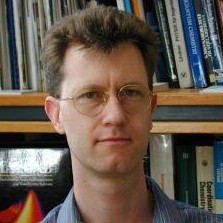EESS talk on "Addressing the arsenic crisis in Bangladesh: Geochemistry and adapted technologies"

Event details
| Date | 24.05.2016 |
| Hour | 12:15 › 13:15 |
| Speaker | Dr Stephan Hug, head of Chemistry and Water Resources, EAWAG, CH |
| Location | |
| Category | Conferences - Seminars |
Abstract:
Groundwater aquifers are the main source of water for drinking and for irrigation in Bangladesh. Since the early 1990s it is known that the groundwater in large regions of Bangladesh and other countries contains arsenic at concentrations from 50-1000 µg/L, multiple times higher than the WHO limit of 10 µg/L and local limits of 50 µg/L. Despite large efforts and significant successes, over 20 million people in Bangladesh still consume drinking water with arsenic above these limits.
The most successful measure has been the targeting of deeper aquifers with lower As-concentrations, but more detailed studies have shown that the optimal depth for deep tubewells has to be determined locally to minimize other unwanted solutes such as manganese and salt. Arsenic removal remains an important option in areas where arsenic-free water is not available.
Among the most promising arsenic removal technologies with inexpensive and locally available materials are filters using zero-valent iron (ZVI). The corrosion of ZVI under oxic and anoxic conditions produces a variety of reactive intermediates and solid phases that can transform and immobilize inorganic and organic pollutants. In intermittently oxic and anoxic ZVI-layers in sand filters, As(III) is oxidized to more strongly adsorbing As(V) by oxidizing intermediates and incorporated into iron oxide phases. The slow transformation of initially formed voluminous iron(hydr)oxides to denser phases such as magnetite are crucial processes that can explain the long-term efficiency and functioning of some types of ZVI-based filters, such as the SONO-filters which are deployed in large numbers in Bangladesh. The presentation will focus on geochemical processes of arsenic release and sequestration and on strategies to improve the efficiency and application of ZVI-filters for arsenic removal.
Short biography:
Stephan Hug studied chemistry at the Technikum (Fachhochschule) in Burgdorf and then went to
the United States, where he completed his studies and research in biophysical chemistry with a PhD degree from the University of California at Santa Cruz in 1989. After a postdoc in the department of chemistry at Stanford University, he returned to Switzerland and started a tenure track position as a researcher in aquatic chemistry at Eawag in Duebendorf in 1992. Since 2000, he leads the research group “Chemistry of Water Resources” in the department of “Water Resources and Drinking water” at Eawag. His main research interests are the biogeochemical cycling of metals and trace elements in ground- and surface waters and the treatment of polluted waters with adapted technologies.
Groundwater aquifers are the main source of water for drinking and for irrigation in Bangladesh. Since the early 1990s it is known that the groundwater in large regions of Bangladesh and other countries contains arsenic at concentrations from 50-1000 µg/L, multiple times higher than the WHO limit of 10 µg/L and local limits of 50 µg/L. Despite large efforts and significant successes, over 20 million people in Bangladesh still consume drinking water with arsenic above these limits.
The most successful measure has been the targeting of deeper aquifers with lower As-concentrations, but more detailed studies have shown that the optimal depth for deep tubewells has to be determined locally to minimize other unwanted solutes such as manganese and salt. Arsenic removal remains an important option in areas where arsenic-free water is not available.
Among the most promising arsenic removal technologies with inexpensive and locally available materials are filters using zero-valent iron (ZVI). The corrosion of ZVI under oxic and anoxic conditions produces a variety of reactive intermediates and solid phases that can transform and immobilize inorganic and organic pollutants. In intermittently oxic and anoxic ZVI-layers in sand filters, As(III) is oxidized to more strongly adsorbing As(V) by oxidizing intermediates and incorporated into iron oxide phases. The slow transformation of initially formed voluminous iron(hydr)oxides to denser phases such as magnetite are crucial processes that can explain the long-term efficiency and functioning of some types of ZVI-based filters, such as the SONO-filters which are deployed in large numbers in Bangladesh. The presentation will focus on geochemical processes of arsenic release and sequestration and on strategies to improve the efficiency and application of ZVI-filters for arsenic removal.
Short biography:
Stephan Hug studied chemistry at the Technikum (Fachhochschule) in Burgdorf and then went to
the United States, where he completed his studies and research in biophysical chemistry with a PhD degree from the University of California at Santa Cruz in 1989. After a postdoc in the department of chemistry at Stanford University, he returned to Switzerland and started a tenure track position as a researcher in aquatic chemistry at Eawag in Duebendorf in 1992. Since 2000, he leads the research group “Chemistry of Water Resources” in the department of “Water Resources and Drinking water” at Eawag. His main research interests are the biogeochemical cycling of metals and trace elements in ground- and surface waters and the treatment of polluted waters with adapted technologies.
Practical information
- General public
- Free
- This event is internal
Organizer
- EESS - IIE
Contact
- Prof. Samuel Arey, LMCE